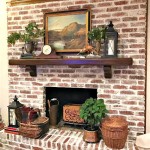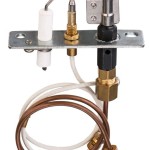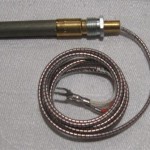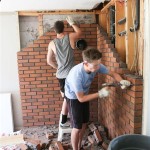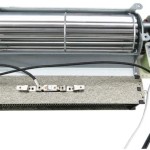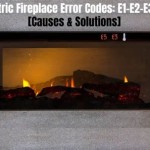How To Install A Fireplace Insert in an Existing Fireplace
Installing a fireplace insert in an existing fireplace is a significant home improvement project that can dramatically increase heating efficiency and enhance the aesthetic appeal of a living space. A fireplace insert is a closed combustion system designed to fit inside an existing masonry fireplace, transforming it from a relatively inefficient open fire to a more effective heat source. This process, while manageable for experienced DIYers, requires careful planning, adherence to safety precautions, and a thorough understanding of building codes and manufacturer specifications.
Before commencing the installation, a comprehensive assessment of the existing fireplace and chimney is crucial. This involves inspecting the firebox, chimney flue, and surrounding masonry for any signs of damage, deterioration, or obstruction. A damaged or structurally unsound chimney can pose serious safety risks, including the potential for chimney fires and carbon monoxide poisoning. If any issues are identified, they must be addressed before proceeding with the insert installation.
Selecting the right insert for the existing fireplace is paramount. Factors to consider include the fireplace opening dimensions, firebox depth, heating capacity required, and fuel type preference (wood, gas, or pellet). Local building codes and regulations will dictate permissible fuel types and installation standards. Always consult with a qualified professional or retailer to ensure the chosen insert is compatible with the existing fireplace and meets all applicable safety and performance requirements.
Preparing the Existing Fireplace
Preparation of the existing fireplace is a critical first step in the installation process. This involves a thorough cleaning of the firebox and chimney flue. Creosote buildup in wood-burning fireplaces is a highly flammable substance that can contribute to dangerous chimney fires. A professional chimney sweep should be hired to remove creosote and other debris from the flue. If installing a gas or pellet insert, the chimney should still be inspected and cleaned to ensure proper ventilation.
The firebox may require modification to accommodate the insert. This can involve removing existing grates, dampers, or decorative elements. In some cases, the firebox opening may need to be enlarged or reshaped to fit the insert properly. Any modifications must be performed in accordance with local building codes and with consideration for the structural integrity of the fireplace. Supporting masonry may need reinforcement depending on the size and weight of the insert. A structural engineer may need to assess the existing fireplace to determine if structural modifications are required.
Consider the hearth extension. Existing hearths often need to be modified or extended to meet the manufacturer's recommendations for clearances to combustible materials. The specific requirements will vary depending on the type and size of the insert. The hearth extension must be constructed of non-combustible materials such as brick, stone, or tile, and must extend a specified distance in front of the fireplace opening and to the sides. Failure to meet hearth extension requirements can create a fire hazard.
Installing the Fireplace Insert
The installation of the fireplace insert itself requires careful attention to detail and adherence to the manufacturer's instructions. The process typically involves connecting the insert to a flue liner that runs the length of the chimney. The flue liner serves to protect the chimney from corrosive combustion byproducts and ensures proper venting of exhaust gases.
For wood-burning inserts, a stainless steel flexible flue liner is typically used. The liner is inserted into the chimney flue and connected to the insert's flue collar. The liner must be properly sized to match the insert's exhaust requirements. Proper insulation of the flue liner is also essential to maintain optimal draft and prevent creosote buildup. This insulation helps to keep the flue gases warm, promoting upward flow and reducing condensation.
Gas and pellet inserts also require a flue liner, often made of stainless steel. The size and type of flue liner will vary depending on the insert model and local building codes. Gas inserts also require a gas supply line to be connected to the unit. This connection must be performed by a qualified gas technician to ensure safety and prevent gas leaks. Pellet inserts will require an electrical connection for the auger and blower fan. Wiring must be performed by a qualified electrician to meet all applicable electrical codes.
Once the flue liner is connected and the insert is positioned within the firebox, the surround should be installed. The surround is a decorative panel that covers the gap between the insert and the fireplace opening. Surrounds are available in a variety of styles and materials to match the decor of the room. The surround should be installed according to the manufacturer's instructions, ensuring a tight and secure fit.
Connecting Utilities and Testing the Insert
Connecting the necessary utilities is a crucial step in the installation process. As mentioned earlier, gas inserts require a gas line connection, and pellet inserts require an electrical connection. These connections must be performed by qualified professionals to ensure safety and compliance with local codes. Improperly installed gas lines can lead to dangerous gas leaks, and faulty electrical wiring can create a fire hazard.
Once all connections are complete, thorough testing of the insert is essential. For wood-burning inserts, this involves starting a small fire and observing the draft and venting characteristics. The smoke should be drawn up the chimney without any backdrafting into the room. For gas and pellet inserts, the unit should be turned on and tested through its various settings. The flame should be stable and consistent, and the exhaust should be venting properly.
A carbon monoxide detector should be installed in the room where the insert is located. Carbon monoxide is a colorless, odorless gas that can be produced by incomplete combustion. It is essential to ensure proper combustion and venting to prevent carbon monoxide poisoning. The detector should be tested regularly to ensure it is functioning properly.
A final inspection by a qualified professional is highly recommended. This inspection will ensure that the insert has been installed correctly and that it meets all applicable safety and performance requirements. The inspector will check the flue liner connection, gas or electrical connections, and venting characteristics. This final inspection provides peace of mind and ensures the safety and efficiency of the fireplace insert.
Installing a fireplace insert in an existing fireplace is a complex project that requires careful planning, attention to detail, and adherence to safety precautions. While it is possible for experienced DIYers to perform the installation, it is often best to hire qualified professionals to ensure the job is done correctly and safely. Proper installation will not only improve the efficiency and aesthetic appeal of the fireplace but also provide peace of mind knowing that the home is protected from fire hazards and carbon monoxide poisoning.

How To Install An Electric Fireplace Insert Fireplaces Direct Learning Center

How To Install A Fireplace Insert In An Unconventional Opening Ask This Old House

ᑕ❶ᑐ How To Install An Electric Fireplace Insert Magikflame Blog

How To Install An Electric Fireplace Insert Fireplaces Direct Learning Center

How To Install A Wood Burning Fireplace Insert Fireplaces Direct Learning Center

How To Install A Fireplace Insert In An Unconventional Opening Ask This Old House

Fireplace Insert Installation Step By Forbes Home

How To Install A Fireplace Insert Ask This Old House
Wood Stoves And Fireplaces How To Install A Burning Fireplace Insert Hearth Com Forums Home

How To Install An Electric Fireplace Insert In Existing
Related Posts

